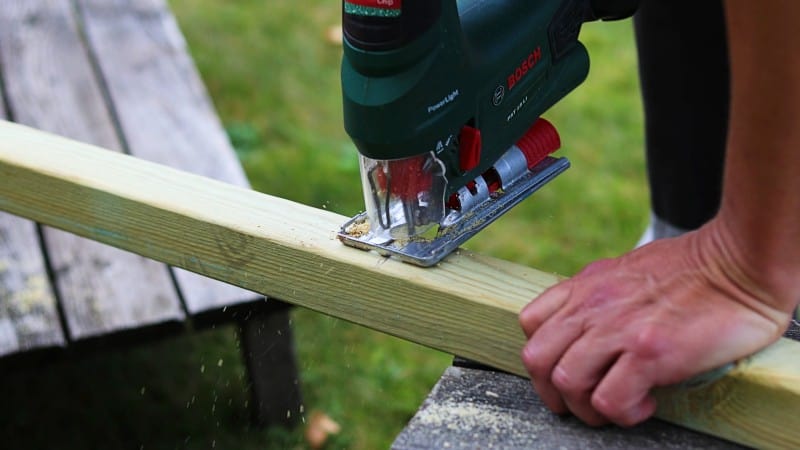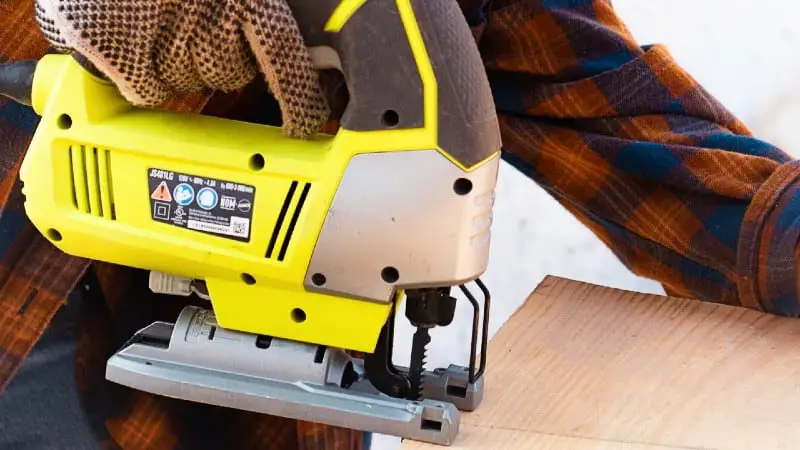Do you know that feeling of being trapped in a mountain of tasks? Like you’re just trying to stay afloat, but it’s like you’re swimming upstream while wearing a jean jacket and someone glued your arms to your sides?
It’s why they created the Jigsaw! The Jigsaw is a productivity tool that helps you take back control of your schedule and organize your projects. Whether you’re working on a collaborative or solo project, the Jigsaw is designed to help you get more done in less time.
Here are 5 reasons the Jigsaw lets you be more productive:
#1. Jigsaws are lightweight and easy to use, you can put them to work quickly
It’s easy to get a jigsaw up and running, so you can start your project quickly. You don’t need a lot of time or space to work with jigsaws—they’re lightweight and compact, which means they’re also easy to store.
If you’ve never used power tools before, don’t worry! Simply use the grip handle to control the jigsaw’s movement, and guide it along the cutting line you’ve drawn on your surface. Wherever the blade is pointed, it will cut, so be sure to keep your hand steady and take your time. I wrote another article about the weight of circular saws.
#2. There’s a jigsaw for every budget
They’re great for novices, but professionals can use them too. A jigsaw is not just a tool for beginners and those who are new to woodworking. It is an affordable, easy-to-use tool that allows you to cut through a wide variety of materials quickly. If you’re in the market for an inexpensive tool that can be used on a variety of projects, look no further than the jigsaw.
There’s one out there for every budget. Jigsaws come in a wide range of prices from about $25 all the way up to $400 or more, so there’s something out there for everyone: DIYer? Interested in Home Improvement? Just getting started? There’s a jigsaw to meet your needs.
Why are jigsaws so great? They’re powerful, they’re safe and they’re versatile. They work with any material, even metal! You can count on these bad boys to cut through just about anything. Whether you’re looking to do some DIY projects around the house or cut out brackets for a wooden shelf, a jigsaw is the tool you need. In another article, I compare the jigsaw to the router.

#3. A jigsaw can do things other tools can’t do
A jigsaw is an indispensable tool for any woodworker. It can do things you can’t do with other tools. Here are just a few of the amazing things you can accomplish with a jigsaw:
Can cut curves: You’ve seen those projects that require curving cuts, and how do you make them? You can start by grabbing a jigsaw. Jigsaws were designed for making these kinds of cuts, and this is what makes jigsaws stand out from other tools.
Cut shapes in wood: Don’t forget about the different shapes you can cut with a jigsaw! Have a project that needs circles, triangles, or squares in the middle of your workpiece? No problem – just follow the lines you’ve drawn!
Can make plunge cuts: A plunge cut allows you to start cutting in the middle of a piece of wood, without having to drill a hole. This is useful if you’re trying to cut a rectangular shape out of a larger piece (such as an opening for an outlet box), or if you’re trying to make an internal cut with no visible entry point.
Take it anywhere you need it: The jigsaw is portable, so it can be taken out into the field, or wherever your project is: on top of a ladder, out in the yard, or even in the house. I wrote another article with 31 jigsaw tips.
#4. Jigsaws use a variety of blades that handle specific jobs well
Jigsaws are some of the most versatile tools you can own, and a big part of that versatility is due to the variety of blades available. This means that whatever type of cut you need to make, or whatever material you need to work with, there’s likely a blade suited for it.
That’s what makes the jigsaw such a great tool for productivity. Not only does it provide a precise and clean cut, but with the right blades and accessories, you can use it for almost any job. There are 9 main types of jigsaw blades. Let’s look at them:
High Carbon Steel (HCS) blades
These affordable blades are flexible, but tend to dull quickly. Use them for wood, MDF, or plastic.
High-Speed Steel (HSS) blades
These blades are more durable than HCS ones. Use them for harder materials such as metals.
Bi-Metal blades
These blades are both flexible and resistant to wear. Use them for hardwoods and metal.
Tungsten-carbide grit blades
Instead of teeth, these blades use a cutting edge made of tungsten-carbide grit—which can stand up to high heat and lasts longer than many other blades.
Diamond Grit Blades
These are similar to tungsten-carbide grit blades but are harder. They’re also more expensive, but if you’re cutting tough stuff like porcelain, glass, marble, ceramics, plastic, cast iron, tile, brick, stone, granite, clay pipe, or marble it’s well worth it.
Reverse tooth blades
With standard jigsaw blades, the teeth point up. The reciprocating motion of the blade pushes the jigsaw down toward the workpiece. However, this can often result in splinters showing on the upper, visible side of the workpiece. With a reverse tooth blade, the teeth point downward. This results in the saw being pushed upward towards the operator. However, the visible side of the cut is usually much smoother with fewer splinters.
Plunge cut blades
They need to have sharp tips to cut through the wood as you tilt the jigsaw downward to begin your plunge cut. If the blade does not have the proper tip, it could snap and break as you attempt a plunge cut.
Scroll cutting blades
If you’re looking for a blade that lets you make fine, intricate cuts without binding or breaking, scroll blades are what you need. Scroll blades are narrower than other jigsaw blades, and they allow you to cut tight curves.
Flush-cutting blades
Normal blades do not protrude from the foot of the saw. The flush-cutting blade is wide enough to do this so you can cut flush to an obstruction such as a wall. However, the foot needs to have an opening for a wide blade. If it doesn’t have one, this type of blade can’t be used.
Note: Always refer to the manufacturer’s directions and specifications to pick the best jigsaw blade for any particular job. For example, if you are trying to cut through metal or hardwood, choose a blade that is designed specifically for those materials.
The Jigsaw lets you be more productive because it’s one tool that will handle most of the jobs you need to do. Let’s say, for example, that you need to cut some two-by-fours for a deck or picnic table. No sweat! You can use the same jigsaw you used to make all those delicate cuts in the fence post tops or carve out the flower pattern for your new shelf. I wrote another article with 11 reasons why jigsaw blades keep breaking.

#5. Jigsaw blades are inexpensive, so you don’t need to fuss over blade changes
It goes without saying that when your jigsaw blade becomes dull—or in the event that it breaks from a too-tight curve—it’s time for a replacement. But, unlike other woodworking tools where you have to take great care when changing blades, jigsaws make this process as simple as possible so you can get back to working in no time.
Jigsaw blades come in basically two types:
U-Shank: U-Shank jigsaw blades are an older style that use hex screw-locks with Allen wrenches to change out the blades. This can be inconvenient because it’s easy to misplace the Allen wrenches, and you won’t be able to change blades without them. Also, the blades are often hot after cutting (because of friction with the wood). If your fingers touch hot blades, they can get burned.
T-Shank: T-Shank jigsaw blades are the newer and more common style, and they use a tool-free clamping system so that the blade simply snaps into place with no fuss. With some brands and models, there is even a “hands-free” blade removal process—convenient since you don’t need to touch a hot blade when it’s ready to be changed out!
This means that the moment you notice your jigsaw blade getting dull, you can just pop in a new one and keep working without missing a beat. You’ll save time on your project and be able to focus on the work itself, rather than fiddling around with your tools. I wrote another article about T-Shank and U-Shank jigsaw blades.

Final words: Reasons The Jigsaw Lets You Be More Productive …
When it comes to getting things done, we all need the right tools. And there’s no doubt that the jigsaw is one of the best tools you can get your hands on. Check out these five reasons why a jigsaw lets you be more productive:
It’s inexpensive and Easy to Use
One of the best parts about a jigsaw is how easy it is to pick up and use. If you’ve always wanted to try woodworking but haven’t yet committed to a power tool purchase, a jigsaw is a great way to do it without spending a ton of money on an expensive piece of equipment. A good jigsaw will only set you back about $50, which means that if you decide later that it’s not for you or that you want something more advanced, you won’t have wasted much money or time on learning how to use the tool.
It’s versatile
While they’re easy enough for beginners, they’re also flexible enough that even expert woodworkers will find many uses for them. For example, they can handle tasks other saws can’t: they allow precision cuts, curved cuts, and plunge cuts all with one compact tool!
But perhaps their greatest strength is the ability to make intricate and complicated cuts—not by measuring and marking, but by simply following a template or pattern of some kind—once the template has been created and attached, the curve can be made quickly, easily, and accurately! This allows the operator to save time and be more productive.
You’ll want to get more done
Once you start using your new jigsaw, chances are good that you won’t want to stop. It’ll become your new favorite tool and with all of its uses, it’s hard to argue. It’s so easy to use and inexpensive that if you don’t already have one, you’re going to want to get one right away.
You can cut through almost anything
Jigsaws can cut through plastic, wood, paneling, or even metal if you have the right blade. If you’re working on a project around the house or at work that needs cutting, a jigsaw will probably be able to do the job for you.
It takes less time
With your own jigsaw, you’ll never have to wait in line for a table saw again or ask your friend who has one if he can help you with a new project. You’ll be able to cut through anything and everything on your list without having to rely on any other tools.
If you’re looking for a woodworking tool that can help you get your projects done quickly, safely, and well, look no further than the jigsaw. It’s a great complement to your circular saw or table saw, or it can be used on its own. It’s lightweight and versatile, which means you can use the jigsaw in tight spaces where a larger saw might not do the job. And with all the different blades available, you can perform dozens of different tasks with just one tool. You’ll also find yourself working more quickly and accurately than ever before.
For more information, see another article I wrote called: What is a Jigsaw?
A jigsaw is the right tool to use when you’re in search of a more productive woodworking experience. With a jigsaw, you’ll be able to:
* Save time by cutting with greater accuracy
* Spend less money on replacement blades
* Reduce your stress levels by having more control over your saw
What are you waiting for? Try out the Jigsaw today!
Did you enjoy reading this article? If so, you might like to visit my Pinterest profile. It contains pins about Woodworking, Tools, Projects, DIY & Crafts, Hardware, and related topics.


